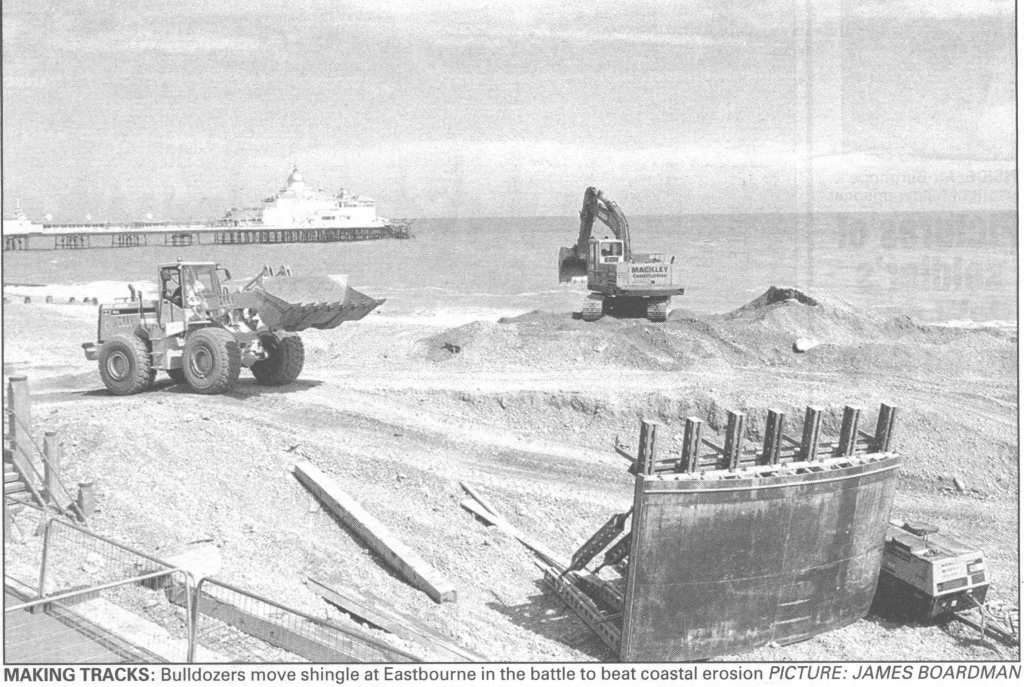

Never-ending struggle to keep the sea at bay
The Argus 12-05-1999
 A £30 MILLION scheme to protect the future of one of Sussex's most famous sections of coastline will be declared complete today by Environment Minister Elliot Morley, left. Here Mr Morley, writing exclusively for the Argus, gives his views on the four-year battle against the sea at Eastbourne and about the Government's commitment to the future of sea defences throughout Sussex. All along this stretch of coast there are projects at various stages of planning, design, building and completion. For example, the major sea defence work in the current year is that continuing on the scheme at Shoreham and Lancing, involving the building of rock groynes and beach nourishment in the Kings Walk area.
A £30 MILLION scheme to protect the future of one of Sussex's most famous sections of coastline will be declared complete today by Environment Minister Elliot Morley, left. Here Mr Morley, writing exclusively for the Argus, gives his views on the four-year battle against the sea at Eastbourne and about the Government's commitment to the future of sea defences throughout Sussex. All along this stretch of coast there are projects at various stages of planning, design, building and completion. For example, the major sea defence work in the current year is that continuing on the scheme at Shoreham and Lancing, involving the building of rock groynes and beach nourishment in the Kings Walk area.